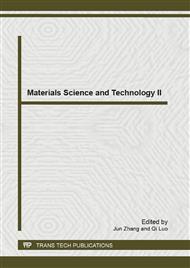p.569
p.575
p.581
p.586
p.590
p.595
p.600
p.608
p.614
The Influence of Different Stress States on 16MnR Deformation Capacity
Abstract:
16MnR is the typical material of pressure equipment which worked under complex stress state in engineering application. In order to be close to the actual combined tension-shearing stress state and explore the relationship of deformation capacity and different stress state, many groups of combined tension-torsion tests on 16MnR specimens were designed and the equivalent stress-strain relation under different stress state was obtained. The concept of stress triaxiaty (TS value) was cited to characterize the different stress state and the result showed different stress states have a great influence on the material plastic deformation capacity, TS value turns larger, the plastic deformation weakened; 16MnR has a strongest plastic deformation capacity in pure torsion; the level of tensile stress had no significant effect on the maximum stress in the biaxial stress state, but has a significant inverse relationship with the maximum equivalent strain .At last, the mathematical relationship between maximum equivalent-strain and stress triaxiaty could be found. If the stress state of one point in the engineering structures is certain, the maximum equivalent-strain can be estimated.
Info:
Periodical:
Pages:
590-594
Citation:
Online since:
July 2013
Authors:
Price:
Сopyright:
© 2013 Trans Tech Publications Ltd. All Rights Reserved
Share:
Citation:


